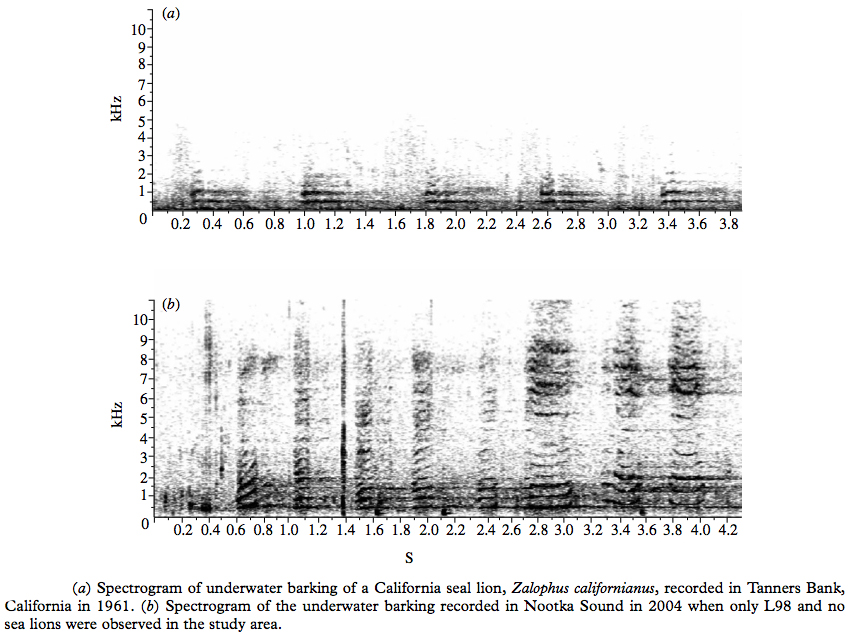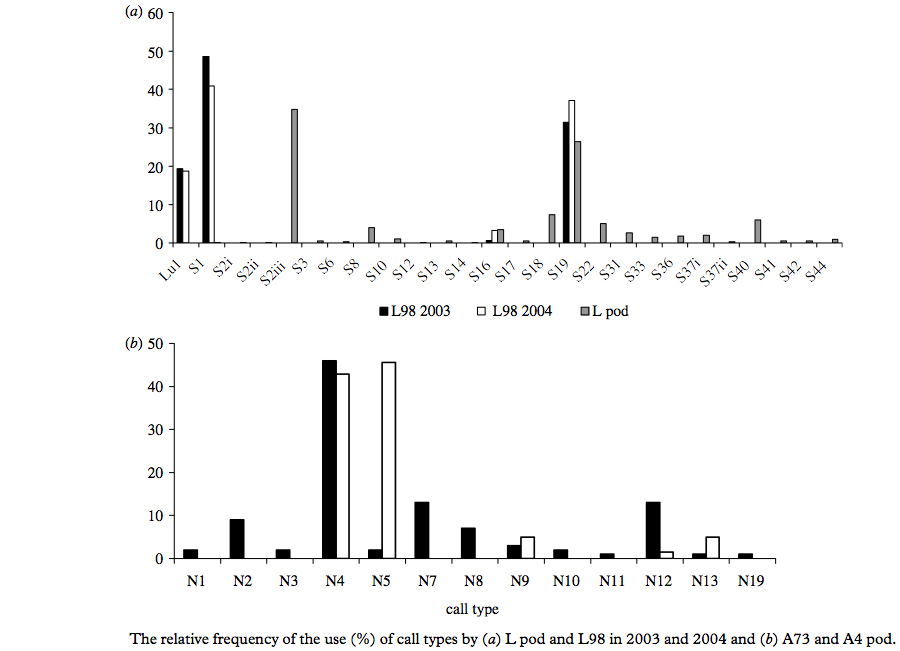Whalesong
Biology 342 Fall 2010 // By Jack Craig & Matt Yee
Ontogeny
Killer whales display learning behavior in calls. One observational study followed two juvenile killer whales that strayed off their natal pod by mistake. Recordings of the natal pod, juveniles, and ambient noises around the juveniles found that the calls of the juveniles frequently mimicked that of barking sea lions. Although the barking is unnatural and not commonly found in killer whales, the non-barking calls were still different between the juveniles and their pod. Although these whales are predisposed to learn certain songs, social interactions help reinforce learning. Crossfostering and conditioning have also been observed to aid learning in beluga whales. (Foote et. al. 2006)
Unlike killer whales, humpback whales have not been observed reproducing sounds not native to their species, however their songs do change within their lifetimes. Humpbacks have been known to copy songs from other individuals in their species, but they do not require others individuals to influence their songs. Humpback songs are in fact always changing. The songs never stay the same, but always stay within their acoustic constraints, which stay stable for at least a decade. It has been hypothesized that humpbacks might be switching between different subsets in their acoustic ranges, yet never exceeding their boundaries such as barking with sea lions. (Mercado et. al. 2006)
At Left: Similarities between the calls of sea lions and orphaned whales.
At Right: Differences between orphans and their native pods.


Both Images From: "Killer Whales are Capable of Vocal Learning"
